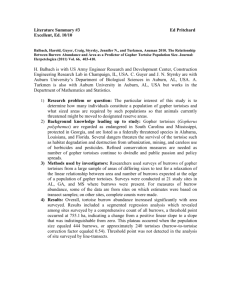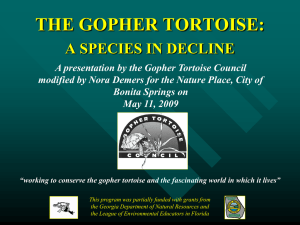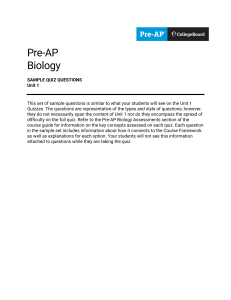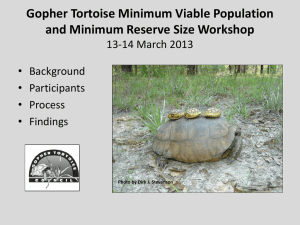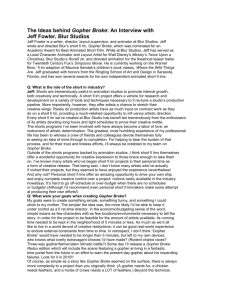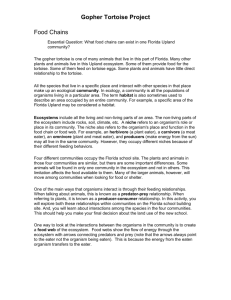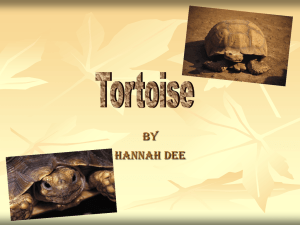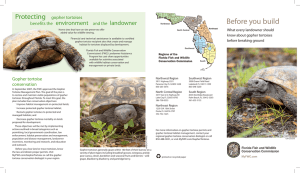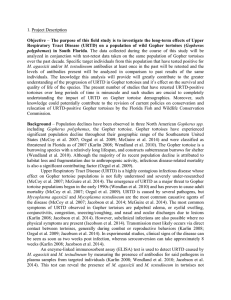In the Wild - The Maryland Zoo in Baltimore
advertisement
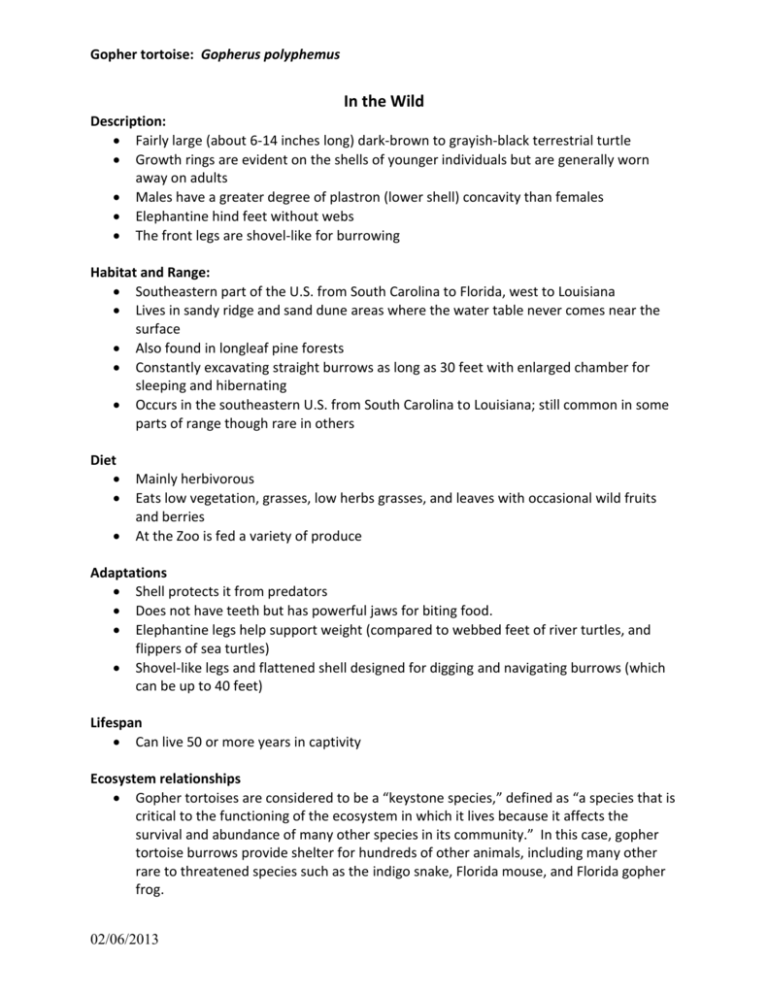
Gopher tortoise: Gopherus polyphemus In the Wild Description: Fairly large (about 6-14 inches long) dark-brown to grayish-black terrestrial turtle Growth rings are evident on the shells of younger individuals but are generally worn away on adults Males have a greater degree of plastron (lower shell) concavity than females Elephantine hind feet without webs The front legs are shovel-like for burrowing Habitat and Range: Southeastern part of the U.S. from South Carolina to Florida, west to Louisiana Lives in sandy ridge and sand dune areas where the water table never comes near the surface Also found in longleaf pine forests Constantly excavating straight burrows as long as 30 feet with enlarged chamber for sleeping and hibernating Occurs in the southeastern U.S. from South Carolina to Louisiana; still common in some parts of range though rare in others Diet Mainly herbivorous Eats low vegetation, grasses, low herbs grasses, and leaves with occasional wild fruits and berries At the Zoo is fed a variety of produce Adaptations Shell protects it from predators Does not have teeth but has powerful jaws for biting food. Elephantine legs help support weight (compared to webbed feet of river turtles, and flippers of sea turtles) Shovel-like legs and flattened shell designed for digging and navigating burrows (which can be up to 40 feet) Lifespan Can live 50 or more years in captivity Ecosystem relationships Gopher tortoises are considered to be a “keystone species,” defined as “a species that is critical to the functioning of the ecosystem in which it lives because it affects the survival and abundance of many other species in its community.” In this case, gopher tortoise burrows provide shelter for hundreds of other animals, including many other rare to threatened species such as the indigo snake, Florida mouse, and Florida gopher frog. 02/06/2013 Gopher tortoise: Gopherus polyphemus They are seed dispersers, spreading plant seeds in their feces Eggs are predated on by raccoons, skunks, armadillos, foxes and opossums Reproduction Sexually mature at 16-21 years Breeding season begins in the spring, when males give short rasping calls to attract females. Can lay between one – 25 eggs, generally in batches in 5-6 holes dug in the ground Eggs are laid mid May to mid June Eggs hatch about 100 days later and hatchlings dig their way to the surface Temperatures determine sex o 85+ degrees F are Females o 84- degrees F are Males Young are 1.5-2 inches long Activity Diurnal, sleeps overnight in its burrow Other “fun facts” Ancient Indians had a monetary system that used gopher tortoises in the place of money. Shells of the tortoises have served as baskets, pots and even sun helmets. Even today, they are a source of food for poorer rural people of Florida and South Georgia Conservation Status and Threats: IUCN Listed as Vulnerable Federally listed as Threatened Population has undergone 80% decline in last 100 years Protected by the US Fish and Wildlife Service – it is illegal to keep gopher tortoises as pets, or remove them from their natural range Habitat conservation is critical, in some cases individuals are relocated to protect them from the impact of development Faces habitat destruction, illegal collection, road mortality, forestry practices (naturally occurring fires used to open up habitat for the gopher tortoise, forestry practices limit burning). Gopher tortoises have been poached in the past for meat, but now they are collected more often for the pet trade Because they are a keystone species, threats to gopher tortoises impact many other species that depend on their burrows for survival At the Zoo Eartha (male) weighs around 3 kgs (7 pounds). Eartha was found in Druid Hill Park. Nothing is known about his prior history or age. 02/06/2013 Gopher tortoise: Gopherus polyphemus What We Can Do Support the conservation efforts of organizations such as the Maryland Zoo, The Maryland DNR Make environmentally responsible lifestyle decisions to help conserve habitat – conserve energy, reduce litter and pollution Choose your pets carefully – a gopher tortoise is not a good choice! Tell your friends who live in gopher tortoise habitat to learn about what they can do in their neighborhoods to help save gopher tortoises – they can identify and mark burrows so that people don’t disturb them. References: The Maryland Zoo Education Department www.arkive.org www.natureserve.org www.iucnredlist.org http://animaldiversity.ummz.umich.edu http://www.gophertortoise.org/ Definition of keystone species: Arms, Karen: Environmental Science (Teacher Edition). 2006. Holt, Rinehart, and Winston. 02/06/2013
